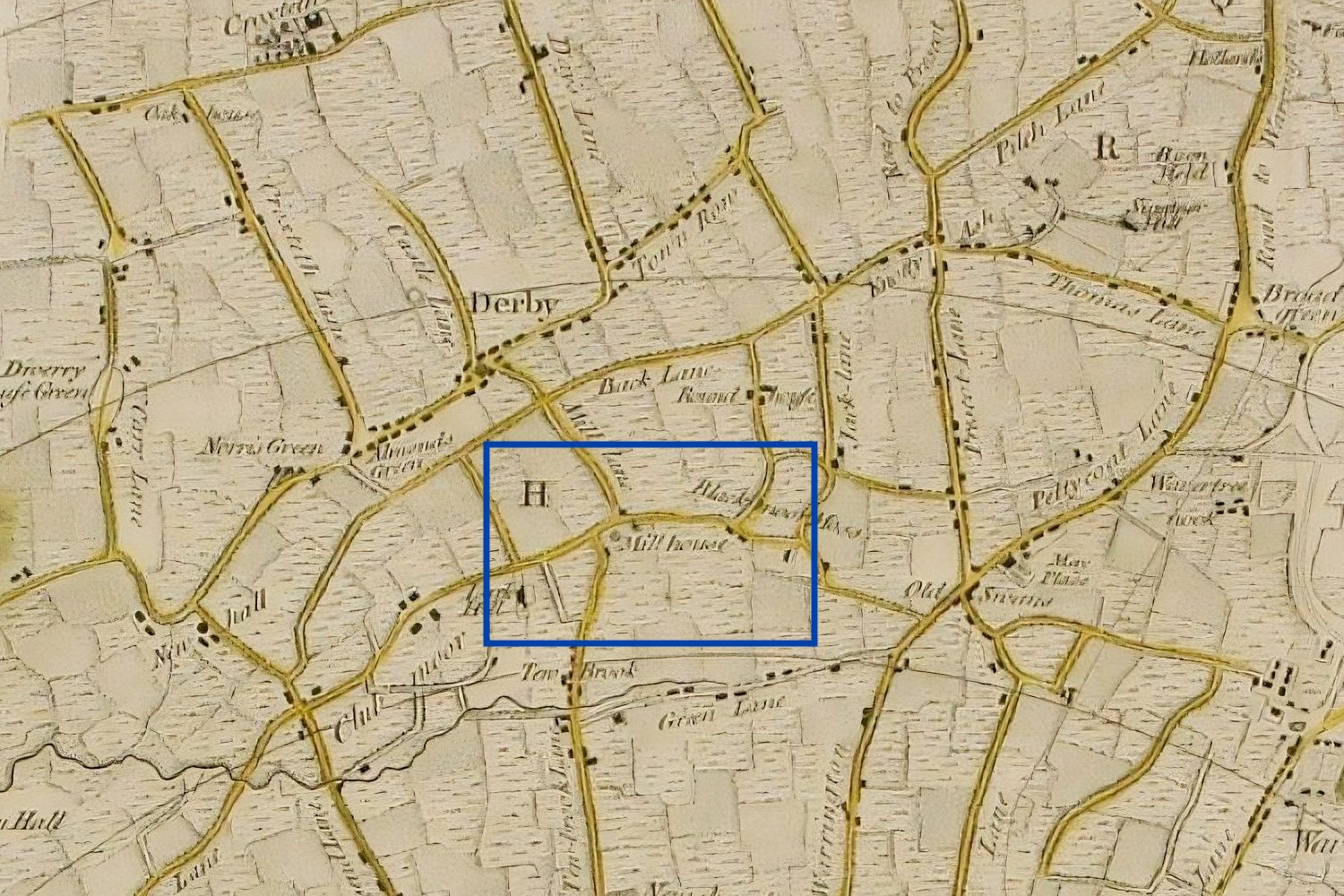Mill Lane (Mylngate in documents of 1444 and 1492) is aptly named as the site of the king’s windmill, first mentioned in 1461, along with a horse mill. This stood on the site of the recently built Marks and Spencer building.
The windmill was built on the end of one of the NW-SE ridges that strike across the landscape – a perfect place to catch the breeze! In the early medieval period a survey by Edward IV noted it was in good condition. At the same time, the house associated with the horse mill was ordered to be repaired.
Perry’s map of 1768 shows the mill, and it would have made a useful landmark for any land surveyors of the time. The map of Lord Molyneux’s estate (1769) also shows it. On very early (horse-drawn) cab routes the mill is quoted as a landmark stop on the route. This use continued until at least around 1825, according to directories of the time, though the mill itself had probably already been demolished by 1805.
A tithe barn, 45ft x 30ft, sat on the opposite corner to the windmill, and is now the site of the aptly named Jolly Miller pub. A large house, Barn Field, occupied the site before the pub was built in the 1920s. Another tithe barn stood where Aspes Road meets Finch Lane. This barn served Acker’s Mill.
There would have been other mills in the area, and a field near Meadow Lane was labelled as Milldam Hey on the tithe map.
Image: Extract from Yates and Perry’s map of 1768, showing West Derby Mill marked as ‘Mill House’

annemarie scotti-lougheed..
says:The local history ifascinating. Thank you so much. I’m really pleased to learn more about the area of West Derby
Martin
says:Thanks, so glad you enjoy it!
Martin
Fred Wright
says:Thank you for the interesting West Derby Tithe barn / Jolly Miller story.
Do you have any info. about the Tithe barn in Liverpool, Tithe barn street.
Martin Greaney
says:Hi Fred,
The tithe barn in Tithebarn Street was built by William Molyneux in 1523 and, according to this article on the BBC website, survived in part until the early 20th century.
It was used, like all tithe barns, to collect a tenth (a ‘tithe’) of all produce made in the area, as a form of land rent or tax.
Best wishes,
Martin
Fred Wright
says:Many thanks for the info. I was wondering where the barn was located, I’ll check out the article, again, thank you so much.